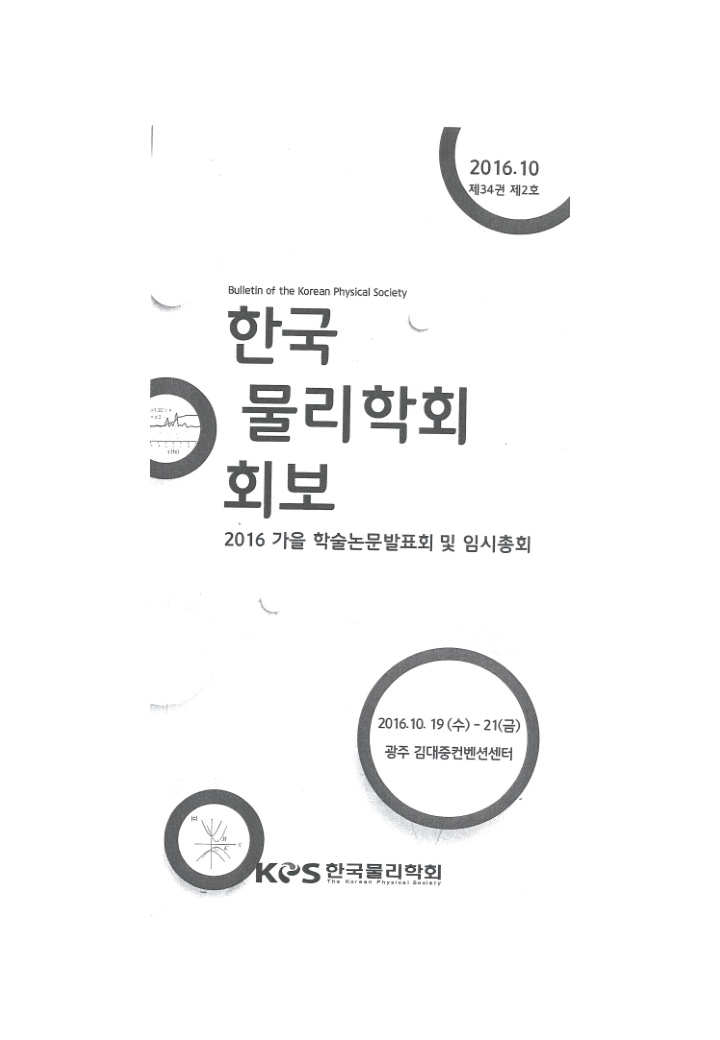



2016. 9. 1. 한국물리학회 _ 초록제출 00814 2016 KPS Fall Meeting, 2016년 가을 학술논문발표회 및 임시총회 2016.10.19 - 2016.10.21 Emergence of Sparsely Synchronized Rhythms and Their Responses to External Stimuli in An Inhomogeneous Small-World Complex Neuronal Network LIM Woochang * , KIM Sang-Yoon Institute for Computational Neuroscience, Daegu National University of Education * wclim@icn.re.kr Abstract: By taking into consideration the inhomogeneous population of interneurons in real neural circuits, we consider an inhomogeneous small-world network (SWN) composed of inhibitory short-range (SR) and long-range (LR) interneurons, and investigate the effect of network architecture on emergence of sparsely synchronized rhythms by varying the fraction of LR interneurons p long . The betweenness centralities of the LR and the SR interneurons (characterizing the potentiality in controlling communication between other interneurons) are distinctly different, although they have the same average in- and out-degrees (representing the potentiality in communication activity). Hence, in view of the betweenness, SWNs we consider are inhomogeneous, unlike the "canonical" Watts-Strogatz SWN with nearly same betweenness centralities. For small p long , the average betweenness centrality of LR interneurons is much larger than that of SR interneurons. Hence, the load of communication traffic is much concentrated on a few LR interneurons. However, with further increase in p long the number of LR connections (coming from LR interneurons) increases, and then the average betweenness centrality of LR interneurons decreases. Consequently, the average path length becomes shorter, and the load of communication traffic is less concentrated on LR interneurons, which leads to better efficiency of global communication between interneurons. Sparsely synchronized rhythms are thus found to emerge when passing a small critical value p (c)long (~ 0.16). This transition from desynchronization to sparse synchronization is well characterized in terms of a realistic "thermodynamic" order parameter, and the degree of sparse synchronization is well measured in terms of a realistic "statistical-mechanical" spiking measure. These dynamical behaviors in the inhomogeneous SWN are also compared with those in the homogeneous Watts-Strogatz SWN, in connection with their network topologies. Particularly, we note that the main difference between the two types of SWNs lies in the distribution of betweenness centralities. Unlike the case of the Watts-Strogatz SWN, dynamical responses to external stimuli vary depending on the type of stimulated interneurons in the inhomogeneous SWN. We consider two cases of external time-periodic stimuli applied to sub-populations of LR and SR interneurons, respectively. Dynamical responses (such as synchronization suppression and enhancement) to these two cases of stimuli are studied and discussed in relation to the betweenness centralities of stimulated interneurons, representing the effectiveness for transfer of stimulation effect in the whole network. Keywords: Short-range and long-range interneurons, Inhomogeneous small-world network, Inhomogeneous betweenness centrality, Sparsely synchronized rhythms, Synchronization suppression and enhancement 위 내용에 이상이 없습니다. http://www.kps.or.kr/Conference/PopAbstractView2.asp?AC=0&NonMbr=0&CODE=CC20160601&nNO=4195 1/2
Recommend
More recommend